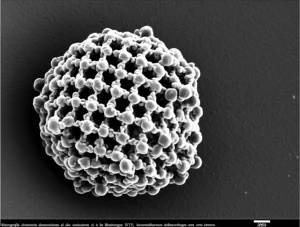Tick Talk: Uncovering Hidden Viruses in China’s Guangxi Region
Hey there! Ever thought much about ticks? You know, those tiny little critters that hang out in the grass or on your pets? Yeah, maybe not the most glamorous topic, but stick with me! They’re actually super important players in the world of viruses, second only to mosquitoes when it comes to spreading nasty stuff around. They don’t just carry viruses; sometimes, they even *host* them, keeping them going in nature. Pretty wild, right?
Understanding what viruses these ticks are carrying, and where, is a big deal. It’s like having an early warning system for diseases that could potentially jump to us or our animals. So, my friends and I (okay, okay, the brilliant researchers behind this study, but let’s pretend we were there!) decided to take a closer look at the ticks hanging out in Guangxi, a really interesting region in southwestern China. Guangxi is a cool place – lots of different landscapes, warm climate, and it borders other countries, which means lots of movement of people and animals. All of that makes it a prime spot for ticks and the viruses they carry to thrive and spread.
The Great Tick Hunt in Guangxi
Our mission was pretty clear: go find some ticks! We systematically collected them from all sorts of animals – wildlife and domestic livestock – across 18 different spots in Guangxi. Think of it like a big tick safari! Once we had our little specimens, the real work began. We didn’t just look at them under a microscope (though we did that too, the old-school way!), we also used some fancy molecular biology techniques. This combo approach helps us figure out exactly which tick species we’re dealing with, especially for those tricky ones that look super similar or are damaged.
We ended up collecting a whopping 1286 hard ticks (that’s the *Ixodidae* family, if you’re getting technical) from 17 different districts. After all the careful examination, we identified ticks belonging to four genera and six species. The most common ones we found were Rhipicephalus microplus and Amblyomma javanense. But here’s a cool little discovery: we also found Haemaphysalis hystricis and Dermacentor tamokensis, which hadn’t been officially recorded in Guangxi before! So, we added a couple of new names to the region’s tick roster.
Here’s a quick look at the tick lineup we found:
- Rhipicephalus microplus (the most common!)
- Amblyomma javanense (also very common)
- Haemaphysalis longicornis
- Haemaphysalis hystricis (new record!)
- Rhipicephalus sanguineus
- Dermacentor tamokensis (new record!)
Identifying these ticks accurately is super important because different tick species can carry different viruses. It’s like knowing which bus route a specific passenger usually takes!

Diving into the Viral Zoo
Okay, so we knew what ticks we had. Now for the exciting (and maybe a little spooky) part: what viruses were they carrying? We used a cutting-edge technique called viral metagenomics, which basically means we sequenced *all* the genetic material we could find in the ticks to see what viruses popped up. It’s like taking a snapshot of the entire viral community living inside them.
And wow, what a community it was! We found a broad range of viruses, belonging to 13 known viral families, plus a couple of unclassified ones. Most of the viruses we detected were RNA viruses (like, 97.88%!), which are often the ones we worry about for rapid spread and mutation. Among the different types of viruses, arboviruses (that’s short for arthropod-borne viruses, meaning they’re spread by things like ticks and mosquitoes) were the most abundant, making up over half of what we found.
Interestingly, the two most common tick species we found, R. microplus and A. javanense, were also the ones carrying the highest number of different virus species. It makes sense, right? If they’re the most widespread ticks, they’re more likely to pick up different viruses from different hosts. We found one virus, *Glypta fumiferanae ichnovirus*, that seemed to be everywhere, in every tick species we collected. But the one we were really interested in was the Jingmen tick virus (JMTV).
Spotlight on Jingmen Tick Virus (JMTV)
JMTV is a relatively new kid on the block in the world of tick-borne viruses, first spotted back in 2010 in China. What makes it super unique and scientifically fascinating is its genome structure. Unlike classic flaviviruses (which it’s related to) that have one continuous piece of RNA, JMTV has four separate RNA segments. Think of it like having four different instruction manuals instead of one big book. This segmented nature is pretty rare for this group of viruses and allows for some interesting genetic tricks.
We found JMTV in four of the tick species we collected. Using our high-tech sequencing data, we managed to piece together six nearly complete JMTV genomes from our samples. We gave them cool names like GXTV-PC4.2 and GXTV-43 (GX for Guangxi, of course!). And here’s where it gets really interesting: two of these strains, GXTV-PC4.2 and GXTV-43, looked genetically different enough from known JMTV strains to be considered novel variants. It’s like finding new versions of the virus right here in Guangxi!
Not only did we find new strains, but we also saw evidence of genetic recombination in the JMTV genome, specifically in segments 2, 3, and 4. Recombination is when a virus swaps genetic material with another virus, kind of like shuffling a deck of cards. This can lead to new combinations of genes, potentially changing how the virus behaves, how easily it spreads, or even how sick it makes someone. Finding this recombination tells us that JMTV is actively evolving and adapting in this region.

Why This Matters: JMTV’s Sneaky Ways and Guangxi’s Role
So, why is all this tick and virus talk important for you and me? Well, JMTV isn’t just a tick problem; it’s been found in various animals (like monkeys, cattle, and rodents) and, crucially, it can infect humans. Studies have shown it can cause illnesses ranging from mild to severe, and it can even replicate in human skin after a tick bite. Finding new strains and recombination events means the virus is changing, and we need to keep a close eye on it to understand if these changes affect its ability to infect or cause disease in humans or animals.
Guangxi’s unique characteristics play a big role here. Its subtropical climate and diverse environment are perfect for ticks to thrive. Plus, being a border region with lots of trade and movement means viruses can potentially travel across borders, either by infected animals (wild or smuggled) or even by migratory birds, which are known long-distance virus carriers.
We saw differences in viral abundance across different locations in Guangxi. Cities like Nanning (the capital, a hub for international trade) and Beihai (a coastal tourist spot with islands and lots of birds) showed higher viral loads in ticks. This makes sense – more people, more animals, more movement, potentially higher tick density, and more opportunities for viruses to spread. These areas are basically high-risk zones for tick bites and potential virus transmission.

The fact that JMTV is found in different tick species and different animal hosts (as seen in the phylogenetic trees we built, which show how the viruses are related) suggests it can easily jump between species. Ticks sometimes even feed on the same host or interact in ways that could allow viruses to pass between different tick species. This ability to move between different ticks and different animals makes JMTV a virus with significant potential for widespread transmission.
Keeping an Eye Out
Our study confirms that Guangxi is home to a diverse population of ticks carrying a wide variety of viruses, with JMTV being a particularly noteworthy one due to its unique structure, genetic diversity, and potential to infect humans. Finding new strains and evidence of recombination highlights that this virus is actively evolving.
What does this mean going forward? It means we absolutely need to keep researching and monitoring these ticks and viruses. Understanding where they are, what new forms are emerging, and how they’re spreading is crucial for protecting public health. It’s a complex puzzle involving ticks, animals, the environment, and human activity.
So, next time you’re out in nature, especially in areas like Guangxi, remember the tiny world of ticks and the viruses they carry. Science is on the case, but staying aware and supporting this kind of research is key to staying ahead of potential outbreaks. Keep an eye on those ticks, folks!
Source: Springer







